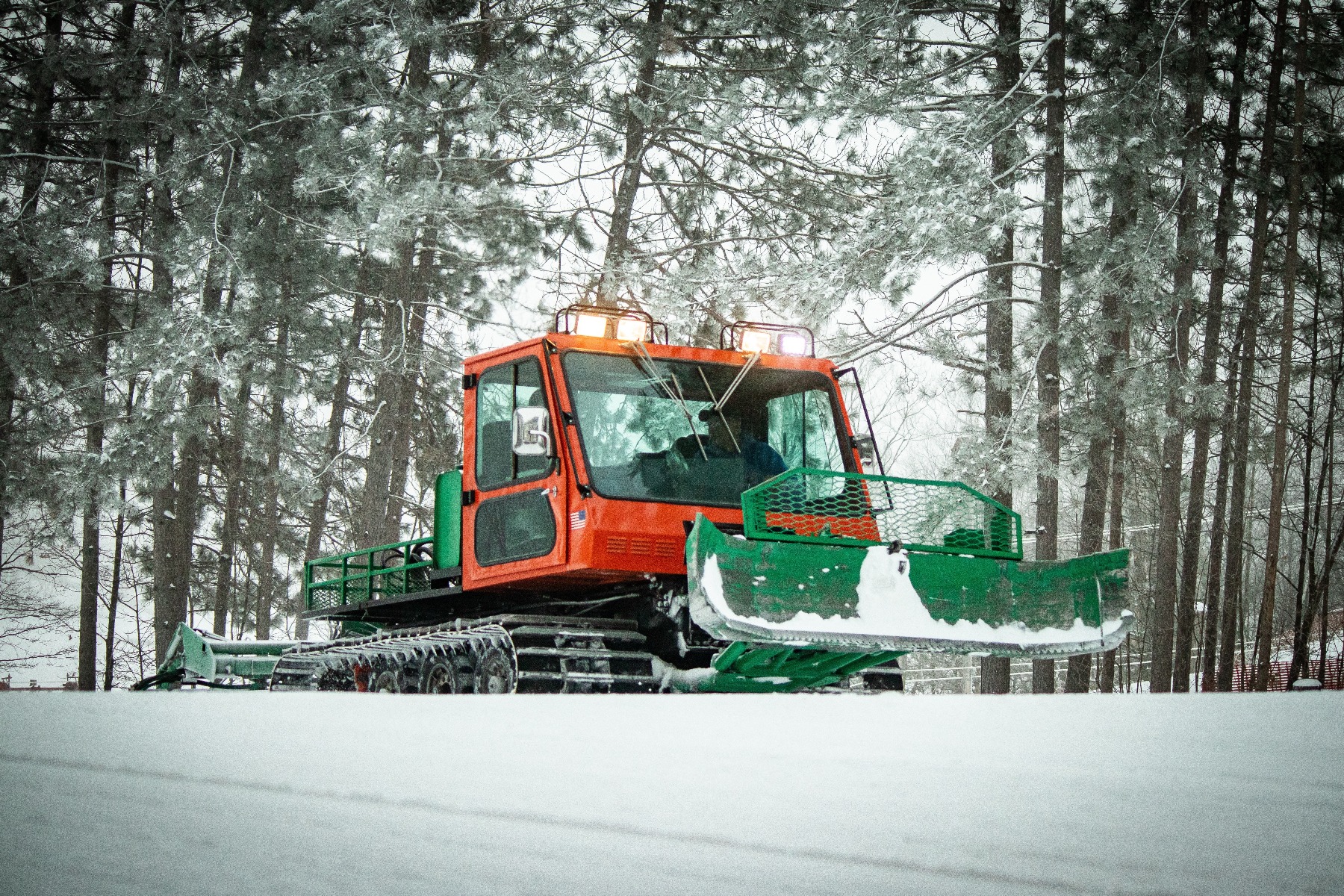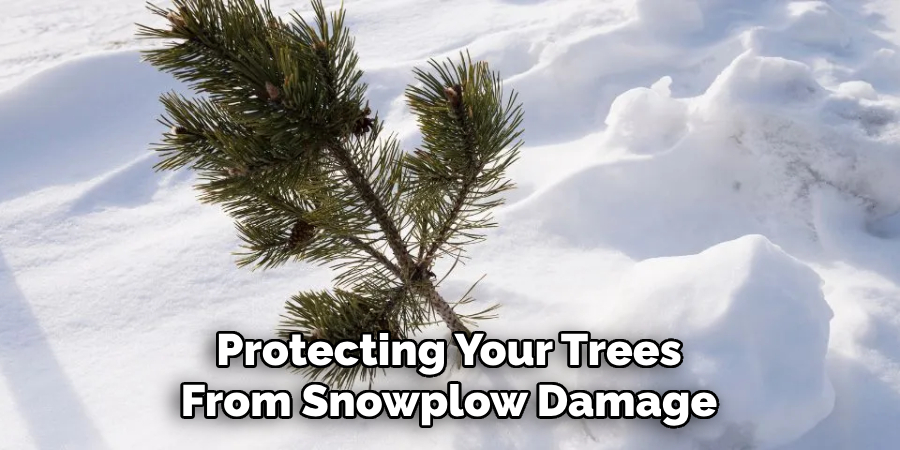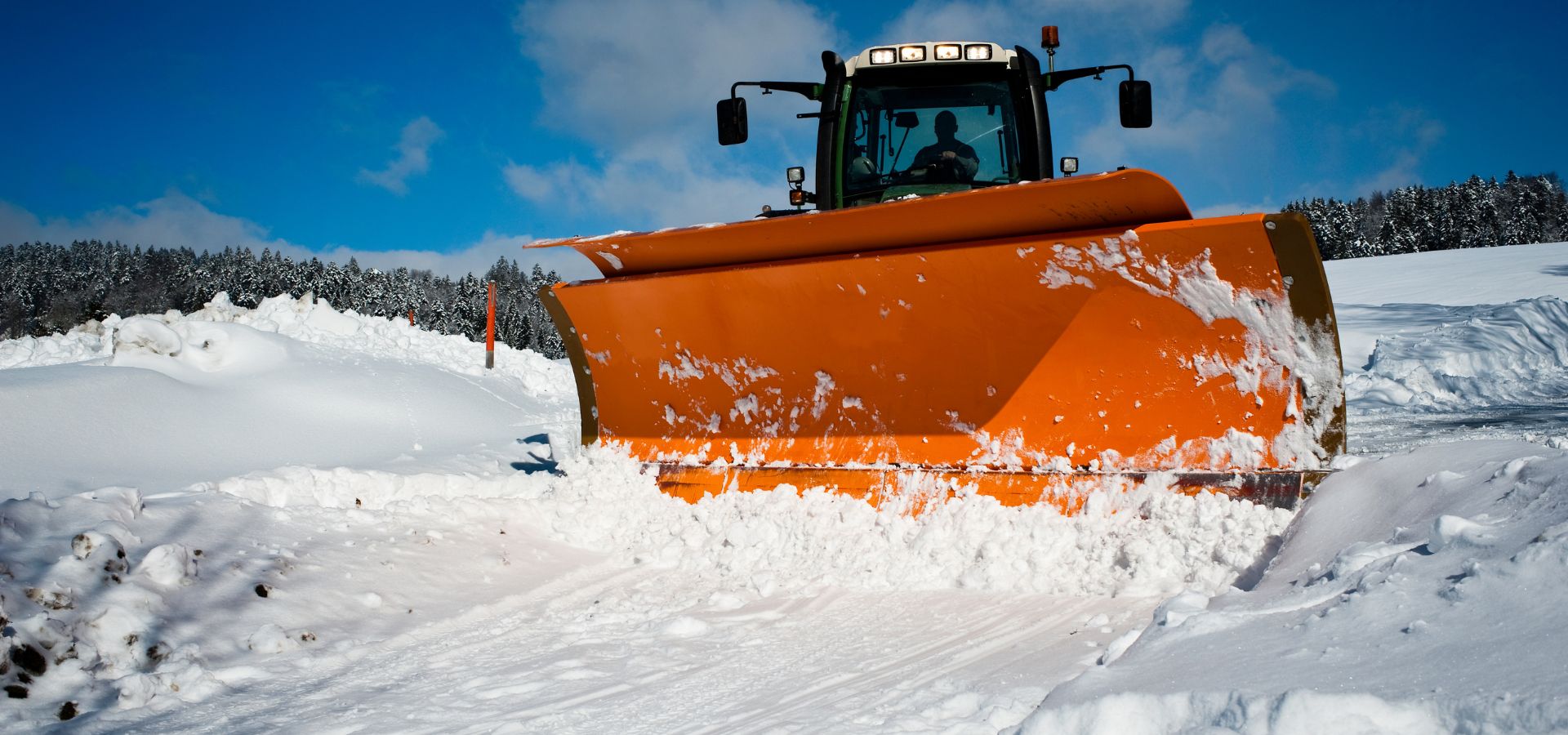To protect your trees from snowplow damage, create a barrier around them using burlap or fences. Surround the trees with wooden stakes and wrap burlap or plastic mesh around them, ensuring that the barrier reaches the ground to prevent any contact with the plow.
Another option is to install a fence around the tree, providing a physical barrier between the plow and the tree. This will help prevent any damage caused by the snow being pushed by the plow. By creating these protective measures, you can ensure the safety and longevity of your trees during winter months.

Credit: www.budgetmailboxes.com
Why Snowplow Damage Is A Concern For Your Trees
Snowplow damage can have a significant impact on the health of your trees. The weight and force of a snowplow can cause various types of damage, including broken branches, trunk wounds, and root damage. These injuries can weaken the tree’s structure and make it more susceptible to disease and pest infestations.
It is important to take steps to protect your trees from snowplow damage. One approach is to create a physical barrier, such as a fence or berm, between the plow and your trees. Additionally, you can mark the boundaries of your property to guide snowplow operators and prevent them from accidentally hitting your trees.
Regular inspections and pruning can also help maintain the health and integrity of your trees, minimizing the potential for snowplow damage. By taking these precautions, you can ensure the longevity and beauty of your trees throughout the winter season.
How to Protect Your Trees from Snowplow Damage: Step by Step Guide
Preparing Your Trees For Winter
Preparing your trees for winter is essential to protect them from snowplow damage. Proper tree pruning techniques should be followed to ensure the trees’ structural integrity. By removing dead or weak branches, you can minimize the risk of limbs breaking under heavy snow loads.
Mulching around the base of the trees helps regulate soil temperature and moisture, preventing freeze-thaw cycles that can damage roots. Winterizing your trees by wrapping their trunks with burlap or tree wrap provides an extra layer of protection against harsh winter conditions.
Creating a buffer zone around your trees using stakes or reflective tape serves as a warning to snowplow operators, reducing the chances of accidental tree damage. Taking these proactive measures will help safeguard your trees and keep them healthy throughout the winter season.
Protective Measures To Implement During Snow Season
Snowplow damage is a common concern during the winter months, so it’s essential to take protective measures to safeguard your trees. One effective method is to place snow stakes around the perimeter of your trees, marking their location for snowplow operators.
Additionally, installing physical barriers like burlap or mesh fencing can provide a buffer zone between the trees and any potential impact. Another useful strategy is to increase visibility by attaching reflectors and lights to the tree trunks or branches. These reflective tools will catch the attention of snowplow drivers and help them avoid collisions.
By implementing these protective measures during the snow season, you can minimize the risk of damage to your beloved trees.
Best Practices For Snowplow Operators
Snowplow operators play a crucial role in protecting trees from damage caused by heavy snowfall. Proper training on tree protection is essential for them to understand the best practices. One important technique is using alternative snow removal methods when clearing snow near trees.
By avoiding direct contact with the trees, operators can minimize the risk of damaging their branches or trunks. Identifying and avoiding tree obstacles during plowing is another key aspect. Operators should be able to recognize potential hazards and steer clear of trees while performing their plowing duties.
Taking these measures into consideration will help protect trees from snowplow damage and ensure their long-term health and stability.
Repairing And Rehabilitating Damaged Trees

Protecting your trees from snowplow damage is crucial to ensuring their long-term health. When it comes to repairing and rehabilitating damaged trees, it is essential to assess the extent of the damage. By pruning and trimming affected branches, you can promote tree recovery.
Proper care and maintenance play a vital role in helping your trees regain their strength. By avoiding overused phrases and repetitive terms, you can maintain the reader’s interest. It is important to be mindful of the impact snowplows can have on your trees and take proactive steps to protect them.
With the right strategies, you can minimize the damage caused by snowplows and keep your trees thriving for years to come.
Long-Term Tree Care And Maintenance
Regular tree inspections and professional maintenance services are crucial for the long-term care of your trees. By monitoring their health, you can spot signs of damage early on and take necessary action. Snowplows can pose a threat to your trees during winter, causing significant damage if not protected properly.
To safeguard your trees from snowplow damage, consider implementing protective measures such as installing bollards or fencing around them. Applying mulch around the base of the trees can also act as a buffer and absorb the impact of snowplows. Additionally, pruning branches away from the path of snowplows can help minimize the risk of damage.
Remember, proactive care and regular maintenance are key to ensuring the longevity and health of your trees.
Frequently Asked Questions On How To Protect Your Trees From Snowplow Damage
How Can Snowplows Damage Trees?
Snowplows can damage trees by shoveling heavy snow onto branches, breaking them. The weight of the snow can also cause trees to bend or even uproot, leading to serious damage or death.
What Are Signs Of Snowplow Damage On Trees?
Signs of snowplow damage on trees include broken branches, bent or leaning trunks, and torn or scraped bark. Trees may also exhibit stress symptoms such as wilting leaves, yellowing foliage, or reduced growth.
How Can I Protect My Trees From Snowplow Damage?
To protect your trees from snowplow damage, create a snow barrier using stakes or fencing around the trees’ drip line. You can also wrap vulnerable trees with burlap or tree guards to shield them from direct impact. Regularly remove snow buildup from tree branches to prevent excessive weight.
Can I Trim My Trees To Prevent Snowplow Damage?
Yes, trimming your trees can help reduce the risk of snowplow damage. Prune the branches regularly to maintain a strong and balanced tree architecture. Removing weak or overhanging branches can prevent them from breaking under the weight of snow pushed by plows.
Should I Contact A Professional For Tree Protection Against Snowplow Damage?
If you are unsure about how to protect your trees from snowplow damage or if you have valuable or large trees at risk, it is recommended to contact a professional arborist. They have the expertise to assess the situation and provide suitable measures for tree protection during winter.
Conclusion
Snowplow damage can be a significant concern for tree owners during the winter months. By implementing a few simple strategies, you can protect your trees and ensure their longevity even in the harshest conditions. First, consider creating a snow barrier around your trees using stakes and burlap.
This will help deflect the force of snow thrown by passing plows. Additionally, pruning your trees before winter can reduce the risk of branches breaking under the weight of heavy snow. Another important step is to avoid piling snow near the base of your trees, as this can cause suffocation and damage to the roots.
Finally, regularly inspecting your trees after a snowstorm will help you identify any potential damage and take prompt action. By taking these measures, you can safeguard your trees and enjoy their beauty for years to come. Word count: 145 words

